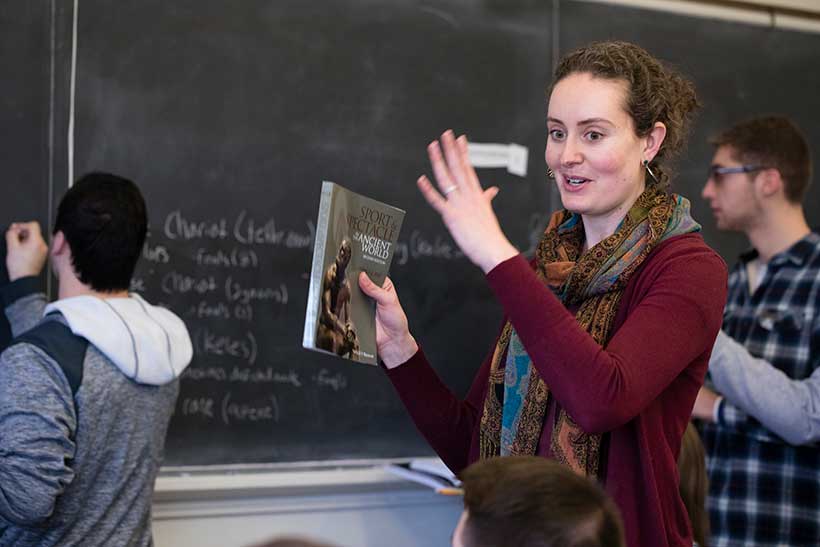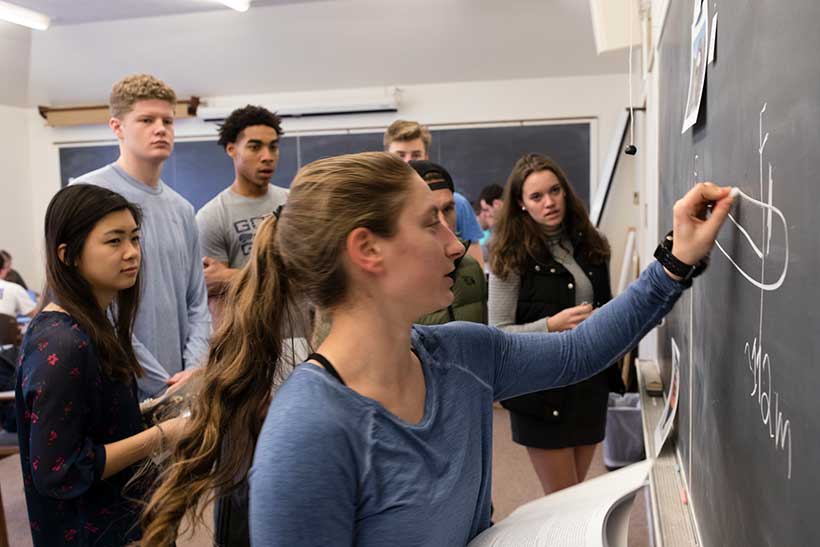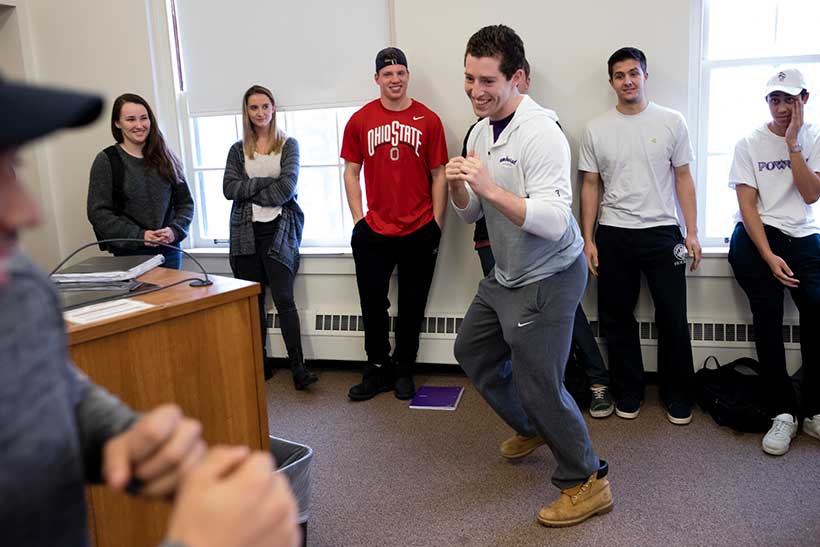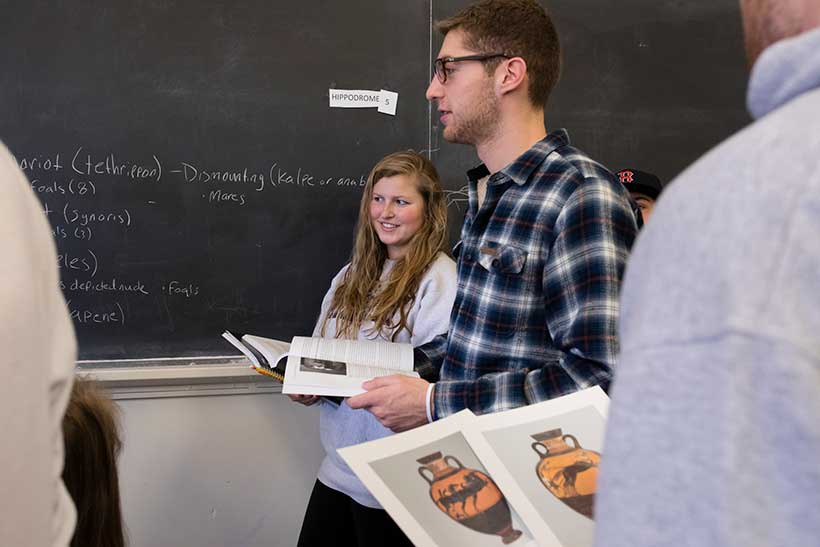Held after the second full moon of the summer solstice, the ancient Olympics were one of four major festivals held at religious sanctuaries throughout the year. The other festivals were held at Delphi, Nemea and Isthmia, but those held at Olympia became the most famous of the Panhellenic Games. Olsen’s course focuses on the Archaic period, from 750 to 500 B.C.
The games brought competitors from the Greek city-states, places like Athens, Argos, Corinth, and as far away as Sicily and North Africa, wherever Greece had colonies.
In a recent class, students broke into groups to examine different aspects and competitions of the Olympian games. About half of the students in the course are Amherst athletes, who were able to give a particular perspective on the ancient competitions.
“You’d have to run slower, and slow down halfway,” said Veronica Rocco ’19, captain of the women’s cross-country and track teams, describing the dialos, in which competitors ran 200 meters to and from a marking post. Faced with a hairpin turn instead of an elliptical course like those used today, they ran relatively slowly and could be more prone to injury, she said.
There are a number of significant differences between the ancient games and the current, which students were quick to point out. The nudity, in particular. Athletes—men and adolescent boys, as there were no women Olympians—were compelled to compete in the nude, and there were special judges devoted to enforcing the nudity. (Notable exceptions included chariot drivers and jockeys.)
And while this seems to be the one “fun fact” about the ancient Olympics that most people retain, the origins of the practice are murky.
“There are different mythic origin stories for that,” Olsen said. “One is that a guy lost his pants, basically, while he was running, and then everybody did it.”
While many see the nudity as enforcing egalitarianism, questions linger, she said: “Is it just that it’s really hot in Greece? Is there some other kind of ideology? Is it eroticism?”
In the combat sports—boxing, wrestling and pankration (a competition which combined elements of wrestling and boxing with kicking and other moves)—competitors could be beaten unconscious or even killed.
“If I felt bad about killing a man, a judge would whip me until I did,” said Chad Simons ’20. “There was no ring, no time limit.”
Breaking your opponents’ fingers was allowed in wrestling. Boxing gloves were mere straps, and “you could land a full punch,” said Giancarlo Ventre ’20. “It was full-fledged warfare.”
And while the Greeks might have been flummoxed to see an Olympics which included skiing and curling, in some ways the modern winter games can give us insight into the original games, Olsen said.
The ancient Greeks “held tragedy and comedy competitions; they had competitions for choral dancing,” she said. “For them, I think, thinking of something like figure skating as a competitive endeavor is not such a stretch—to think that music and dance and artistry like that can also be something you compete in.”






